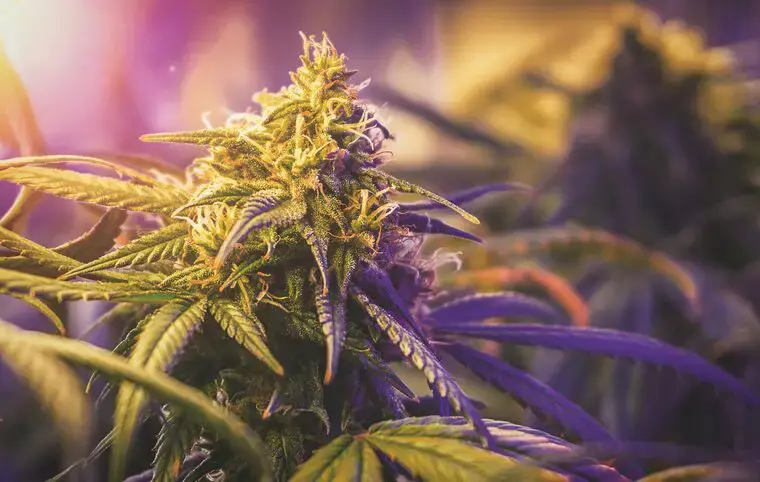Recent research reveals a significant rise in cannabis-related psychiatric conditions, stirring questions about the unspoken risks and misconceptions of marijuana use.
In an empirical study published in the New England Journal of Medicine, Dr. David A. Gorelick, MD, PhD of the University of Maryland School of Medicine (UMSOM), presented his findings on the escalating prevalence of cannabis-related psychiatric disorders in the United States.
The comprehensive study sheds light on the potential adverse impacts of heavy marijuana use and the risk of addiction, clinically termed “cannabis use disorder.”
The standard classification manual of mental disorders used by mental health professionals in the United States, the American Psychiatric Association’s DSM-5-TR, defines cannabis use disorder as “a problematic pattern of cannabis use leading to clinically significant impairment or distress.”
The DSM-5-TR identifies eleven behaviors that indicate cannabis use disorder, primarily focusing on a person’s inability to regulate their marijuana consumption despite experiencing adverse effects in various aspects of life.
Key symptoms encompass a range of issues, such as neglecting responsibilities at work, school, or home due to marijuana use, sacrificing important social, occupational, or recreational activities, and repeatedly using cannabis in situations where it is physically hazardous.
According to the DSM-5-TR, if an individual displays at least two of the specified eleven behaviors, they meet the criteria for a diagnosis of a cannabis-related mental health disorder. A diagnosis is considered “severe” when the individual exhibits six or more symptoms.
In an extensive empirical review, Dr. Gorelick found that nearly 20% of Americans over the age of 12 used marijuana in 2021. Of this, more than 16 million Americans met the criteria for having cannabis use disorder.
Findings showed that young adults were the most significantly impacted, with 14% of individuals aged 18 to 25 being affected by cannabis use disorder.
Cannabis use disorder was shown to be more prevalent in individuals using marijuana more than four times a week, and it was often associated with other psychiatric conditions such as depression, PTSD, or anxiety disorders.
“Almost 50 percent of people with cannabis use disorder have another psychiatric condition such as major depression, post-traumatic stress disorder, or generalized anxiety disorder,” Dr. Gorelick said in a release by the University of Maryland. “It’s vital that patients seek the right psychiatric treatment to address their risk factors.”
The research also highlighted the broader dangers of excessive marijuana use, including the percentage of drug-related emergency room visits and the risk of car accidents among frequent cannabis users.
A study published in September 2023 found that emergency room visits from marijuana-related traffic accidents rose 475.3% between 2020 to 2021.
In a 2021 meta-analysis, researchers found that several studies showed a significant correlation between car crash risk and high blood concentrations of the primary psychoactive component found in cannabis, THC. Conversely, at lower concentrations of THC, results revealed there was no correlation between an increased risk of car accidents.
Researchers cautioned that, unlike alcohol, no scientifically established threshold for THC concentration can be used to determine when driving skills become impaired, thus increasing the risk of a car crash.
A report published by the U.S. Substance Abuse and Mental Health Services Administration found that 11.9% of drug-related emergency room visits in 2022 were associated with cannabis use. This figure was nearly as high as opioid-related visits (12.7%), yet paled in comparison to the 45% of emergency room trips linked to alcohol.
In contrast to the concerns highlighted by Dr. Gorelick, numerous other studies have also shed light on the potential positive health benefits of cannabis use, presenting a more nuanced view of the issue.
The most commonly acknowledged benefit of “medical marijuana” is its use in treating chronic pain. Several studies have supported this idea, with medicinal cannabis users reporting improvements in relaxation, sleep, and quality of life.
Additionally, considerable research in animals has suggested that cannabis could be beneficial in treating individuals who have post-traumatic stress disorder (PTSD). However, a 2021 meta-analysis found that the evidence supporting the use of cannabis to manage PTSD in humans was “limited and based on low-quality evidence.”
Several other studies have touted cannabis as being an effective remedy for a wide range of conditions, such as asthma, inflammatory bowel disease, glaucoma, multiple sclerosis, menstrual cramps, and epilepsy.
Complicating matters, a meta-analysis published in 2022 found that therapeutic benefits for pain management derived from medical marijuana use were a result of the “placebo effect” and not the drug itself.
The “placebo effect” refers to a psychological phenomenon in which a person experiences an improvement in their health condition after unknowingly taking a non-active substance, like sugar pills or saline injections. Since these placebo treatments have no physiological effect, any improvement in the patient’s condition is attributed solely to their belief in the effectiveness of the treatment.
“By the strict orthodoxy of modern medicine, a doctor would say cannabis products don’t work — they’re no better than a placebo,” said Dr. Ted J. Kaptchuk, director of the Program in Placebo Studies and The Therapeutic Encounter at Harvard-affiliated Beth Israel Deaconess Medical Center.
That said, “with the exception of opioids, most pain-relieving medications are barely better than a placebo,” Dr. Kaptchuk points out. “If something helps relieve your pain and doesn’t cause any significant harm, I would say go ahead and use it.”
Dr. Gorelick, who serves as theEditor-in-Chief of the Journal of Cannabis Research, explains that the objective of his recent study was twofold: firstly, to inform physicians about the various health issues that can arise from cannabis use, and secondly, to increase public awareness about cannabis use disorder. This includes helping people recognize its symptoms and understand the available treatment options.
In an era where cannabis legalization and use are on the rise, these findings serve as a crucial reminder of the need for balanced and informed discourse on the subject, emphasizing both the potential health benefits and the risks associated with cannabis use.
“There is a lot of misinformation in the public sphere about cannabis and its effects on psychological health, with many assuming that this drug is safe to use with no side effects,” Dr. Gorelick said.
“It is important for physicians and the public to understand that cannabis can have addictive effects and to recognize signs and symptoms in order to get properly diagnosed and treated.”
Tim McMillan is a retired law enforcement executive, investigative reporter and co-founder of The Debrief. His writing typically focuses on defense, national security, the Intelligence Community and topics related to psychology. You can follow Tim on Twitter: @LtTimMcMillan. Tim can be reached by email: tim@thedebrief.org or through encrypted email: LtTimMcMillan@protonmail.com

